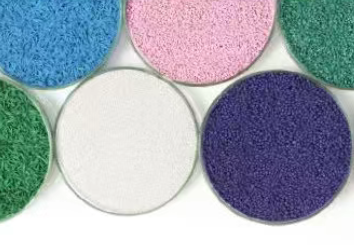Key Points of Titanium Dioxide Application in Masterbatch Analysis!
On August 1, it was reported that the plastics industry holds an important position in the application fields of titanium dioxide, being its second-largest user. The consumption of titanium dioxide in the plastics sector accounts for approximately 20% of its total consumption. Among more than 500 titanium dioxide grades worldwide, over 50 are specifically designed for plastics.
When titanium dioxide is applied to plastic products, it not only functions as a pigment with high hiding power and strong decolorizing ability, but also enhances the heat resistance, light resistance, and weather resistance of the plastics, protecting them from ultraviolet damage. At the same time, it improves the mechanical and electrical properties of the products. Almost all thermosetting and thermoplastic plastics rely on titanium dioxide, with usage typically ranging from 1% to 5%. The application methods are diverse: it can be mixed with resin dry powder, blended with liquids containing plasticizers, or first processed into masterbatches before use.

According to the Masterbatch Industry Network, the particle size of titanium dioxide used in plastics is generally finer, typically ranging from 0.15 to 0.3μm. This allows it to form a blue undertone, which provides a masking effect for most resins with a yellow hue or those prone to yellowing. Additionally, titanium dioxide used in plastics is usually subject to organic surface treatment, using agents such as polyols, silane, or siloxane. The treated titanium dioxide can achieve better dispersion under appropriate mechanical shear forces. However, it is important to note that the high hardness of rutile is a disadvantage for glass fiber reinforced plastics, as it can damage the glass fibers during the coloring process, leading to a significant reduction in the mechanical strength of the plastic products. Therefore, when coloring glass fiber reinforced plastics, it is advisable to choose zinc barium white or zinc sulfide as white pigments, which have slightly inferior optical properties but much lower hardness.
Plastic products have clear quality requirements for titanium dioxide. In terms of weather resistance, plastic products used outdoors and plastic doors and windows must ensure that the titanium dioxide has good weather resistance; whiteness determines the appearance of light-colored or white plastic products; dispersibility affects the production cost of plastic products, and poorly dispersed titanium dioxide reduces the smoothness and glossiness of the products; titanium dioxide with good hiding power allows the produced plastic products to be lighter and thinner.
Plastic color masterbatch is a highly concentrated and efficient color formulation. According to incomplete statistics, the amount of titanium dioxide used annually for masterbatch production in China is about 20,000 to 30,000 tons. The performance of color masterbatch is usually reflected in subsequent product applications, such as film blowing or injection molding processes, so the performance of titanium dioxide in the masterbatch mainly manifests during its application. Specifically, tinting strength determines the amount of titanium dioxide required for plastic products of the same color; whiteness and color difference affect the appearance of light-colored (white) plastic products with the same titanium dioxide content; dispersibility influences the production cost of masterbatch as well as the appearance, gloss, and other indicators of plastic products; and processing performance is related to the production cost of the masterbatch.
【Copyright and Disclaimer】The above information is collected and organized by PlastMatch. The copyright belongs to the original author. This article is reprinted for the purpose of providing more information, and it does not imply that PlastMatch endorses the views expressed in the article or guarantees its accuracy. If there are any errors in the source attribution or if your legitimate rights have been infringed, please contact us, and we will promptly correct or remove the content. If other media, websites, or individuals use the aforementioned content, they must clearly indicate the original source and origin of the work and assume legal responsibility on their own.
Most Popular
-

Brazil Imposes Five-Year Anti-Dumping Duty of Up to $1,267.74 Per Ton on Titanium Dioxide From China
-

Mexico officially imposes tariffs on 1,400 chinese products, with rates up to 50%
-

MOFCOM Spokesperson Answers Questions from Reporters on China-U.S. Kuala Lumpur Trade Consultations Joint Arrangement
-

"Golden October" Weak, Polyethylene Prices Hit New Low of the Year in October
-

Kingfa Sci & Tech Q3 Net Profit Attributable to Shareholders Rises 58.0% YoY to 479 Million Yuan






